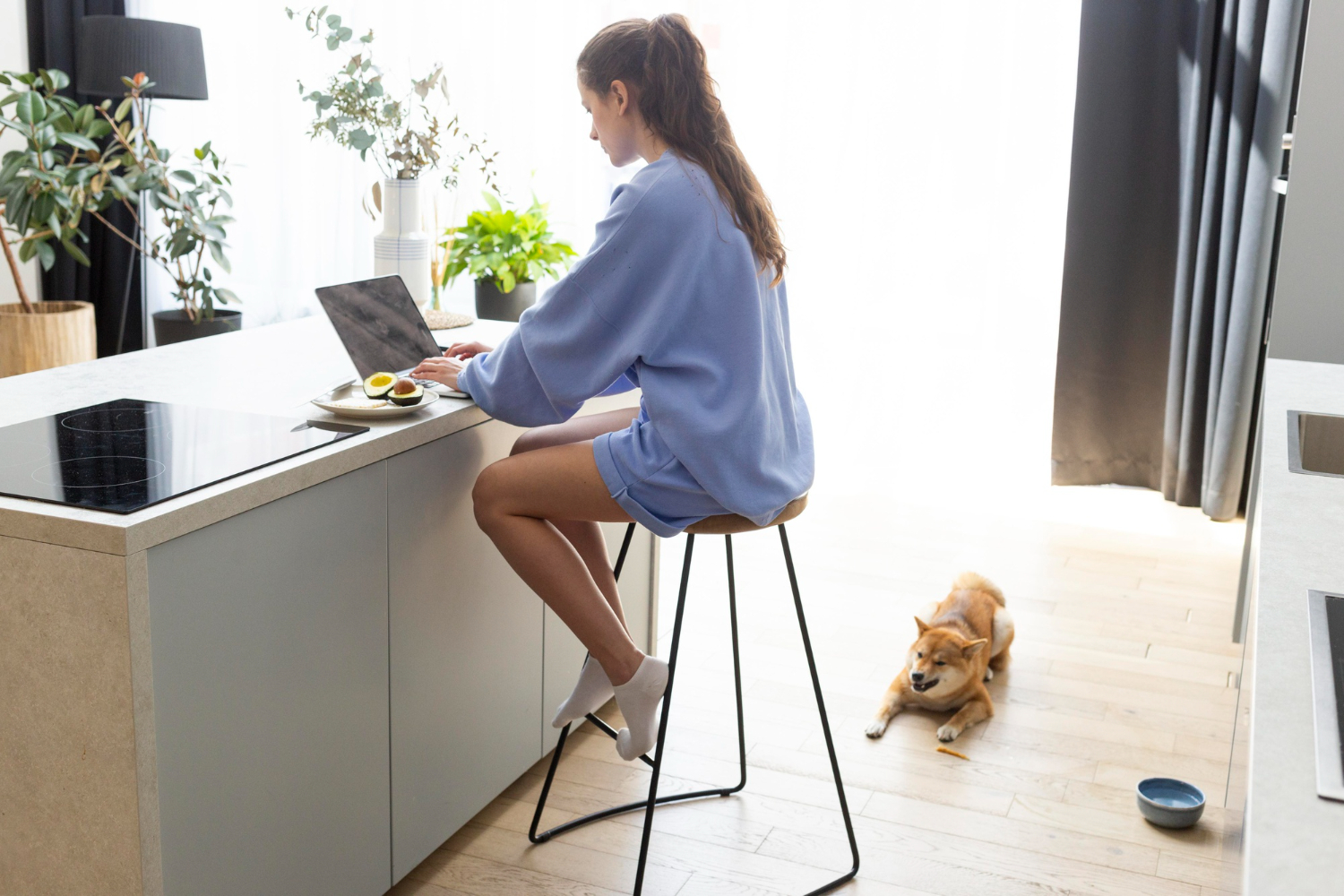It's 9 am and you are preparing your workspace for the day. You've had your coffee, eaten breakfast, and are about to log in when the doorbell rings, interrupting you for the next 10 minutes. After a while, you relax on the couch to check your phone, and suddenly half an hour has passed. Sounds familiar? You are not alone. According to a recent study, while about 68% of people have difficulty concentrating in the office, 62% also admit that they find it difficult to engage in work while at home. Do you want to know what helps improve concentration?
ContentWhat helps improve concentration: work areas How to put it into practice Spatial associations include clothing
From the TV and socializing with housemates to a particularly comfortable-looking bed, distractions are everywhere. However, the answer may lie in spatial association, a technique advocated by neuroscientists that involves creating dedicated “work zones.” They help improve concentration and productivity wherever you work. WomanEL will tell you what it is.
What helps improve concentration: work zones
According to Dr. Emilia Molimpakis, neuroscientist and CEO of Thymia, spatial association is about connecting different spaces with different tasks and/or mindsets, and being clear about what you're doing and where you're doing it.
The idea is: that if you associate a place with a particular job, task, subject, or mindset, it will be easier for you to focus on that task or immerse yourself in that mindset when you are in that place. So instead of working from your couch, dining table, bed, or any other available surface, you'll set strict boundaries around where you can and can't work from.
“The idea of spatial association is that repeating the same task in the same space every time helps you focus and get into the game quickly when you get there,” she explains.
“Recent research has shown that when people go about their normal daily lives, contextual factors such as time and place can influence our cognitive abilities, including attention and working memory.” For the same reason, if you always practice before presentations in a specific room, you will have an easier time remembering information during the presentation by bringing your mind back to what you saw when you were in that space.
How to put this into practice
“I have strict no-work zones, and my living room is one of those places,” explains Dr. Molimpakis. “It was especially important for me to establish this boundary during the pandemic, when I had to work remotely. I always made sure to work in one place at home. And then, while in the living room, I didn’t allow myself to use my laptop or access work apps on my phone. I stick to it, so now when I come home from work and sit on the couch, I automatically switch off and relax.” According to Dr. Molimpakis, the gym is another “no work” zone. “I've made a commitment to turn off notifications when I'm at the gym, so now I associate the treadmill with watching boxing sets and taking time for myself.”
In the office, she uses reverse logic. “I try not to do administrative work at my desk and answer any personal calls outside the office,” she explains. “Having these boundaries helps me stay on task when I'm sitting at my desk. When I walk through the office door, I immediately go into “work mode.”
Spatial associations include clothing
 When working at home, try to separate clothes for work and leisure, Source: freepik.com
When working at home, try to separate clothes for work and leisure, Source: freepik.com
According to Dr. Molimpakis, it's not just where you perform the task that matters. Spatial associations can also include elements adjacent to a space, such as wearing certain clothes. “If you work from home, another way to ensure a connection with work in some areas and an association with leisure in others is to always change into “work clothes” when you work. Instead of wearing “lounge clothes,” she advises.
You can even take it a step further and associate different places in your office with different tasks. For example, you can always brainstorm at your desk. And this will become your creative space.
It is always important to remember that different strategies and spaces suit different people. Whether you're creating a to-do list in a coffee shop or a public office, it's always a good idea to set boundaries between “work” and “chill” spaces.
Need more productivity hacks? Read this equally useful material.
